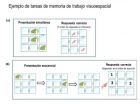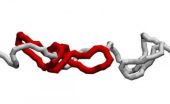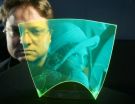(Press-News.org) Electrodes operated into the brain are today used in research and to treat diseases such as Parkinson's. However, their use has been limited by their size. At Lund University in Sweden, researchers have, for the first time, succeeded in implanting an ultrathin nanowire-based electrode and capturing signals from the nerve cells in the brain of a laboratory animal.
The researchers work at Lund University's Neuronano Research Centre in an interdisciplinary collaboration between experts in subjects including neurophysiology, biomaterials, electrical measurements and nanotechnology. Their electrode is composed of a group of nanowires, each of which measures only 200 nanometres (billionths of a metre) in diameter.
Such thin electrodes have previously only been used in experiments with cell cultures.
"Carrying out experiments on a living animal is much more difficult. We are pleased that we have succeeded in developing a functioning nano-electrode, getting it into place and capturing signals from nerve cells", says Professor Jens Schouenborg, who is head of the Neuronano Research Centre.
He sees this as a real breakthrough, but also as only a step on the way. The research group has already worked for several years to develop electrodes that are thin and flexible enough not to disturb the brain tissue, and with material that does not irritate the cells nearby. They now have the first evidence that it is possible to obtain useful nerve signals from nanometre-sized electrodes.
The research will now take a number of directions. The researchers want to try and reduce the size of the base to which the nanowires are attached, improve the connection between the electrode and the electronics that receive the signals from the nerve cells, and experiment with the surface structure of the electrodes to see what produces the best signals without damaging the brain cells.
"In the future, we hope to be able to make electrodes with nanostructured surfaces that are adapted to the various parts of the nerve cells – parts that are no bigger than a few billionths of a metre. Then we could tailor-make each electrode based on where it is going to be placed and what signals it is to capture or emit", says Jens Schouenborg.
When an electrode is inserted into the brain of a patient or a laboratory animal, it is generally anchored to the skull. This means that it doesn't move smoothly with the brain, which floats inside the skull, but rather rubs against the surrounding tissue, which in the long term causes the signals to deteriorate. The Lund group's electrodes will instead be anchored by their surface structure.
"With the right pattern on the surface, they will stay in place yet still move with the body – and the brain – thereby opening up for long-term monitoring of neurones", explains Jens Schouenborg.
He praises the collaboration between medics, physicists and others at the Neuronano Research Centre, and mentions physicist Dmitry B. Suyatin in particular. He is the principal author of the article which the researchers have now published in the international journal PLOS ONE.
The overall goal of the Neuronano Research Centre is to develop electrodes that can be inserted into the brain to study learning, pain and other mechanisms, and, in the long term, to treat conditions such as chronic pain, depression and Parkinson's disease.
###
The article in PLOS ONE can be found here
http://www.plosone.org/article/info%3Adoi%2F10.1371%2Fjournal.pone.0056673
Jens Schouenborg can be contacted on Jens.Schouenborg@med.lu.se or tel. +46 46 222 77 52, mob. +46 702 924572.
Photographs of Jens Schouenborg are available in the Lund University media bank, https://bildweb.srv.lu.se/login/.
About nanowires: the nanowires used in the Lund group's work are made of gallium phosphide, manufactured using a technique known as epitaxy, in which the material is built up one atomic layer at a time. A thin film of gold, a thin layer of hafnium oxide and a polymer layer have also been added to different parts of the electrode.
About nanometres: a nanometre is one billionth of a metre. A strand of hair is around 50 000 nanometres thick, while the diameter of a neurone cell body is usually between 10 000 and 40 000 nanometres.
First signals from brain nerve cells with ultrathin nanowires
2013-02-20
ELSE PRESS RELEASES FROM THIS DATE:
Researchers decipher modus operandi of potential Alzheimer's drug
2013-02-20
This press release is available in German.
The study published in "Angewandte Chemie" might help to work out strategies for developing potential drugs. As the team of scientist including Markus Zweckstetter and Eckhard Mandelkow report, methylene blue inactivates molecular residues that promote the bonding of tau proteins.
Methylene blue is a multi-talented substance with a long history. The synthetic compound was first produced in 1876, and since then has served not only as a blue dye, but also as a medical drug – for example to treat malaria and prevent urinary ...
Bilingual children have a better 'working memory' than monolingual children
2013-02-20
A study conducted at the University of Granada and the University of York in Toronto, Canada, has revealed that bilingual children develop a better working memory –which holds, processes and updates information over short periods of time– than monolingual children. The working memory plays a major role in the execution of a wide range of activities, such as mental calculation (since we have to remember numbers and operate with them) or reading comprehension (given that it requires associating the successive concepts in a text).
The objective of this study –which was published ...
Healthy rivalry could boost sport and business performance
2013-02-20
New research shows that people can recover from poor performance when rivals comment on their failures. The research, to be published in the Journal of Experimental Social Psychology, shows that while criticism from team members sends individuals into downward performance spirals, external criticism can be a trigger that boosts performance as people try to prove the outsiders wrong. The research carried out by the University of Exeter, Amherst College and the University of Stirling offers a method of improving performance following setbacks and can be applied both in the ...
New taxonomy of platinum nanoclusters
2013-02-20
Physicists have gained new insights into the inner intricacies of the structural variations of metallic nanoclusters. This work by Luca Pavan, Cono Di Paola and Francesca Baletto from King's College London, UK, is about to be published in EPJ D. It takes us one step closer to tailoring on-demand characteristics of metallic nanoparticles. Indeed, the geometric structure of these nanoclusters influences their chemical and physical properties, which differ from those of individual molecules and of bulk metals.
The problem resides in the difficulty in evaluating the optimal ...
Molecular basis identified for tissue specific immune regulation in the eye and kidney
2013-02-20
Both AMD, which affects around 50 million people worldwide, and aHUS, a rare kidney disease that affects children, are associated with incorrectly controlled immune systems. A protein called complement factor H (CFH) is responsible for regulating part of our immune system called the complement cascade. Genetic alterations in CFH have been shown to increase a person's risk of developing either AMD or aHUS, but rarely both. Why this is the case has never been explained until now.
Researchers from the Wellcome Trust Centre for Cell Matrix Research and the Ophthalmology and ...
The nano-channel that disentangles knots
2013-02-20
The DNA, just like hair, has a tendency to become knotted, thus it may be useful to disentangle it.
Unfortunately, it is not possible to "actively" choose at random (or better, in one solution) the filaments with the desired features, and this is why scientists adopt "passive" solutions like, for instance, having the DNA pass through nano-pores or nano-channels.
"Channels and filaments have physical features we may exploit to selectively let a type of molecule pass through" explains Micheletti. "You can have more or less entangled filaments and featuring knots of different ...
New technology in the magnetic cooling of chips
2013-02-20
Luis Hueso, the CICnanoGUNE researcher, together with researchers from the University of Cambridge, among others, has developed a new technology in the magnetic cooling of chips based on the straining of materials. Compared with the current technologies, this advance enables the impact on the environment to be lessened. The work has been published recently in the prestigious journal Nature Materials.
Current cooling systems, be they refrigerators, freezers or air conditioning units, make use of the compression and expansion of a gas. When the gas is compressed, it changes ...
A self-healing protective coating for concrete
2013-02-20
Scientists are reporting development of what they describe as the first self-healing protective coating for cracks in concrete, the world's most widely used building material. Their study on the material — which is inexpensive and environmentally friendly — appears in the journal ACS Applied Materials & Interfaces.
Chan-Moon Chung and colleagues explain that protecting concrete roads, bridges and other structures from developing tiny cracks has been a major technological challenge. Cracks allow water, salt used for deicing and air to enter the concrete. During winter ...
New IOM report highlights PEPFAR's successes
2013-02-20
WASHINGTON -- The President's Emergency Plan for AIDS Relief (PEPFAR) has saved and improved millions of lives worldwide and offered proof that HIV/AIDS services can be effectively delivered on a large scale even in countries with high rates of disease and resource constraints, says a new congressionally mandated evaluation conducted by the Institute of Medicine.
Moving forward, PEPFAR needs to intensify efforts to help its partner countries develop the capacity to manage their own programs, sustain the gains that have been made in controlling the HIV epidemic, and improve ...
New imaging device that is flexible, flat, and transparent
2013-02-20
WASHINGTON, Feb. 20, 2013— Digital cameras, medical scanners, and other imaging technologies have advanced considerably during the past decade. Continuing this pace of innovation, an Austrian research team has developed an entirely new way of capturing images based on a flat, flexible, transparent, and potentially disposable polymer sheet. The team describes their new device and its possible applications in a paper published today in the Optical Society's (OSA) open-access journal Optics Express.
The new imager, which resembles a flexible plastic film, uses fluorescent ...



